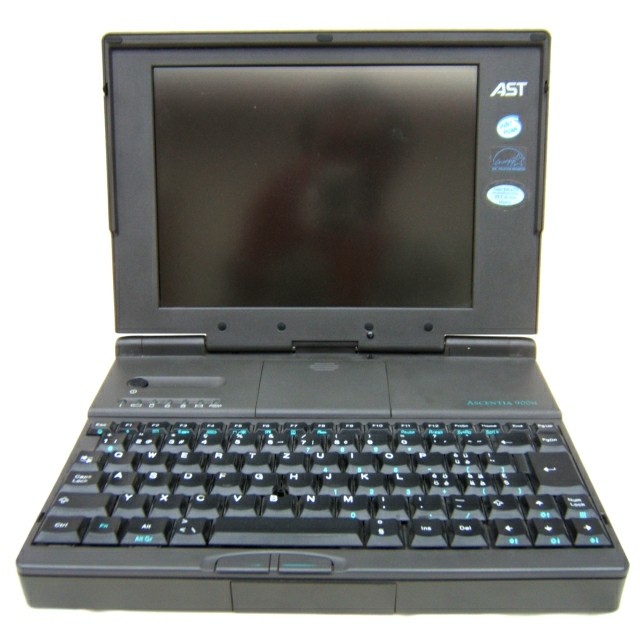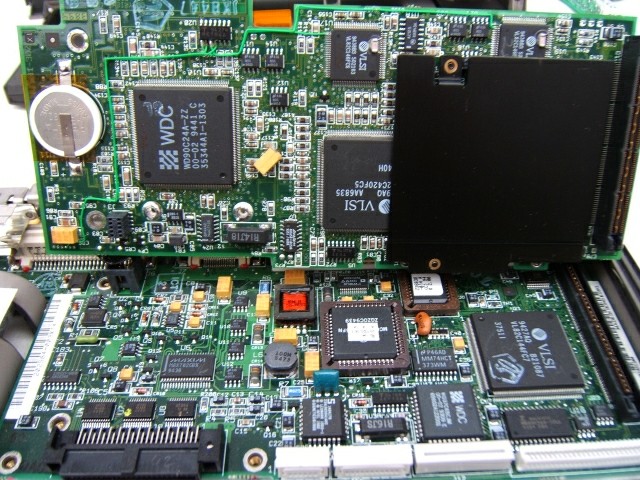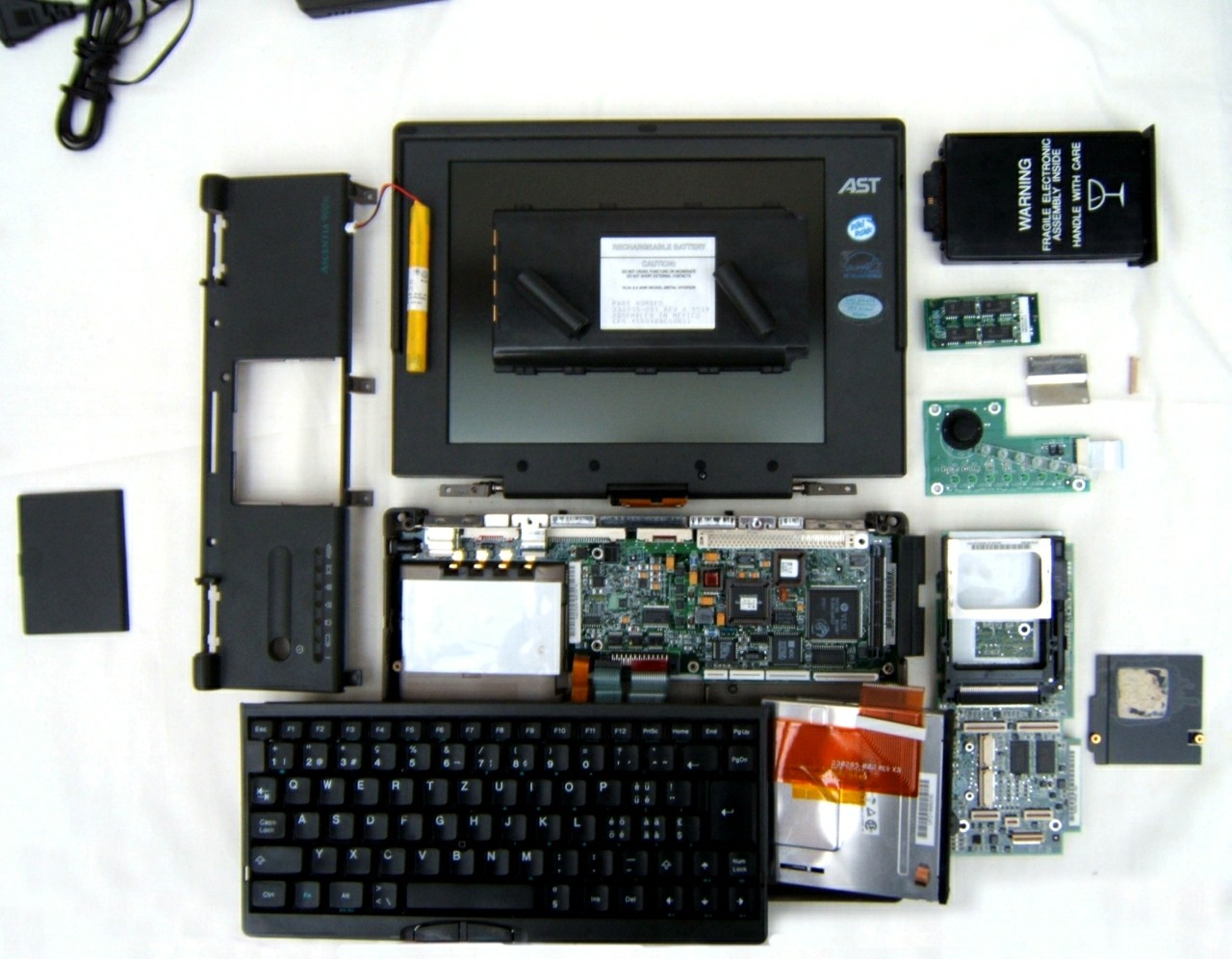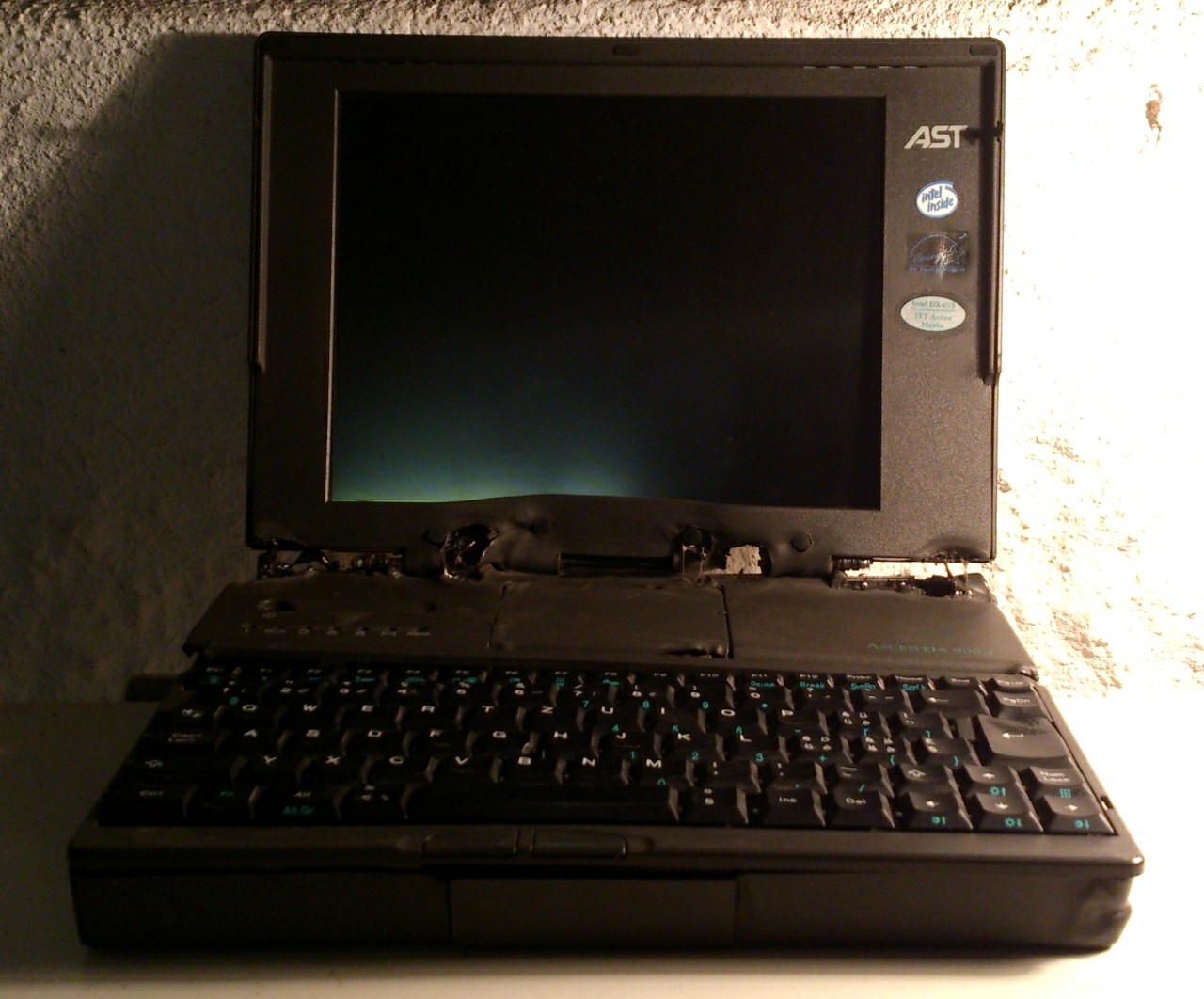AST Ascentia 900NIn early 2009 I was looking for old and retired laptops for a number of future projects. 
This AST Ascentia 900N 4/75 CT10 was given to me by a colleague in May 2009. The CMOS battery was nearing death, its main battery was really dead, and it had no power supply, no nipple, and a German keyboard layout. Still, the device promised to be an interesting restoration project. Within a few weeks I had sourced and modified a substitute AC power brick from a local flea market to get this clunker to start up and finally reveal all its features:
· Intel 80486 DX4/75 CPU Replacing the CMOS battery would've been a non-issue, the faulty internal Ni-MH battery could've been "made lighter" (replacement parts are available online but cost upwards of 70 bucks), we do have external power, and we have functionality. This ought to be a suitable machine to host and run my collection of old DOS games, demos and legacy applications. Or so I thought. But that was not to be: the hard drive started behaving erratically, and in December 2009 I decided to strip the device completely. One of the first things I noticed about the laptop is the way it was put together (in December 1994), almost as if it was assembled from a batch of disparate components -- very different to how modern laptops are built where the necessity and location of every minutiae, component and screw is carefully balanced against material cost, weight, and form factor. The keyboard, for instance, was manufactured for AST by Lexmark in the USA. The huge battery was assembled in Mexico. Even the placement of the memory slots was rather unusual -- right between the keyboard and screen, and almost too-easily accessible without needing tools. 
There is no cooling fan; heat dissipation is achieved via a metal plate pasted onto the CPU. 
A lot of space was wasted but this was probably due to, I strongly believe, much of the assembly having been done by hand. It's very maintenance-friendly, in fact. 
In October 2013 its corpse was re-discovered. So I stuck it in a microwave oven and nuked it. 
The end. For real. This page last updated: 15-12-2013
|